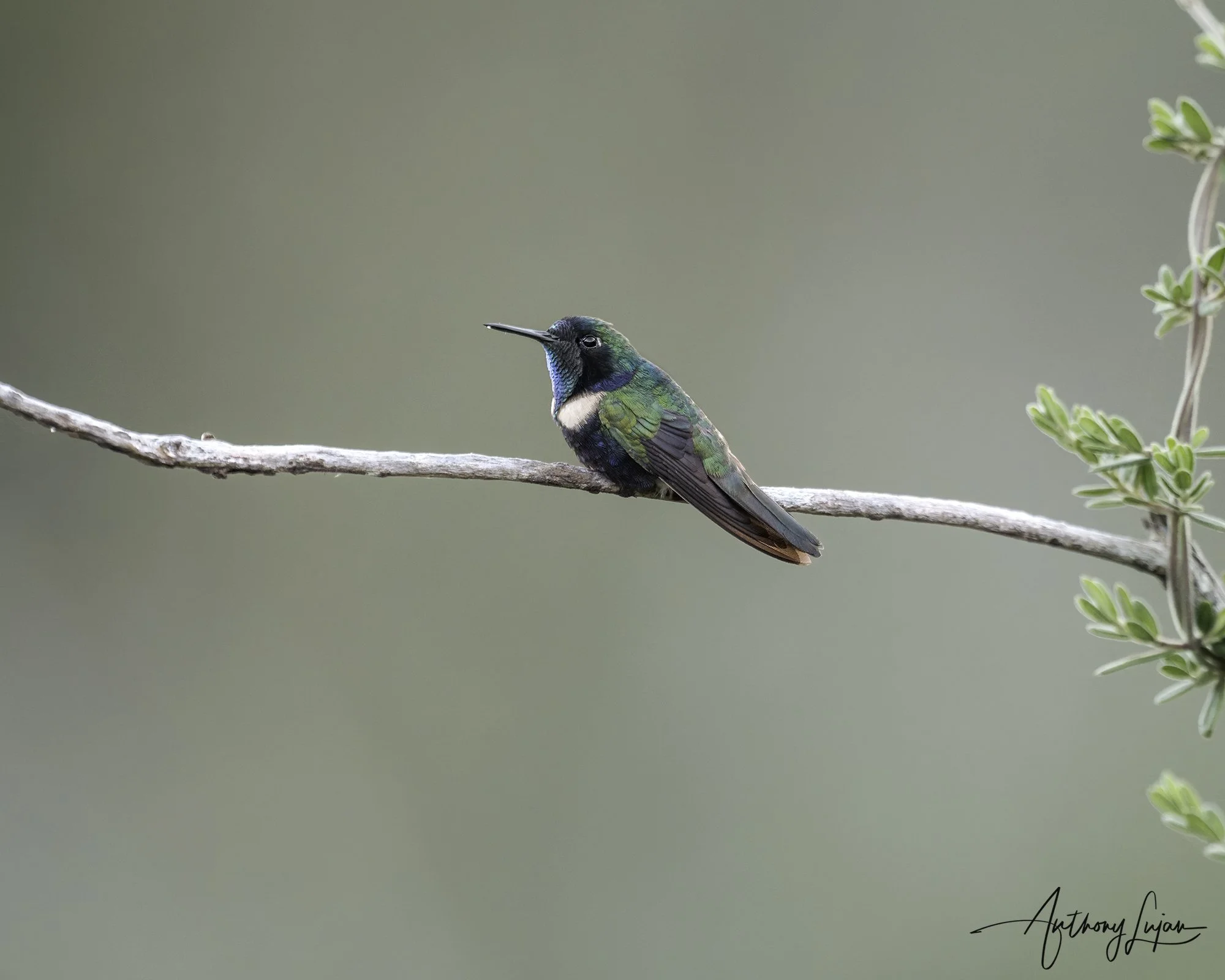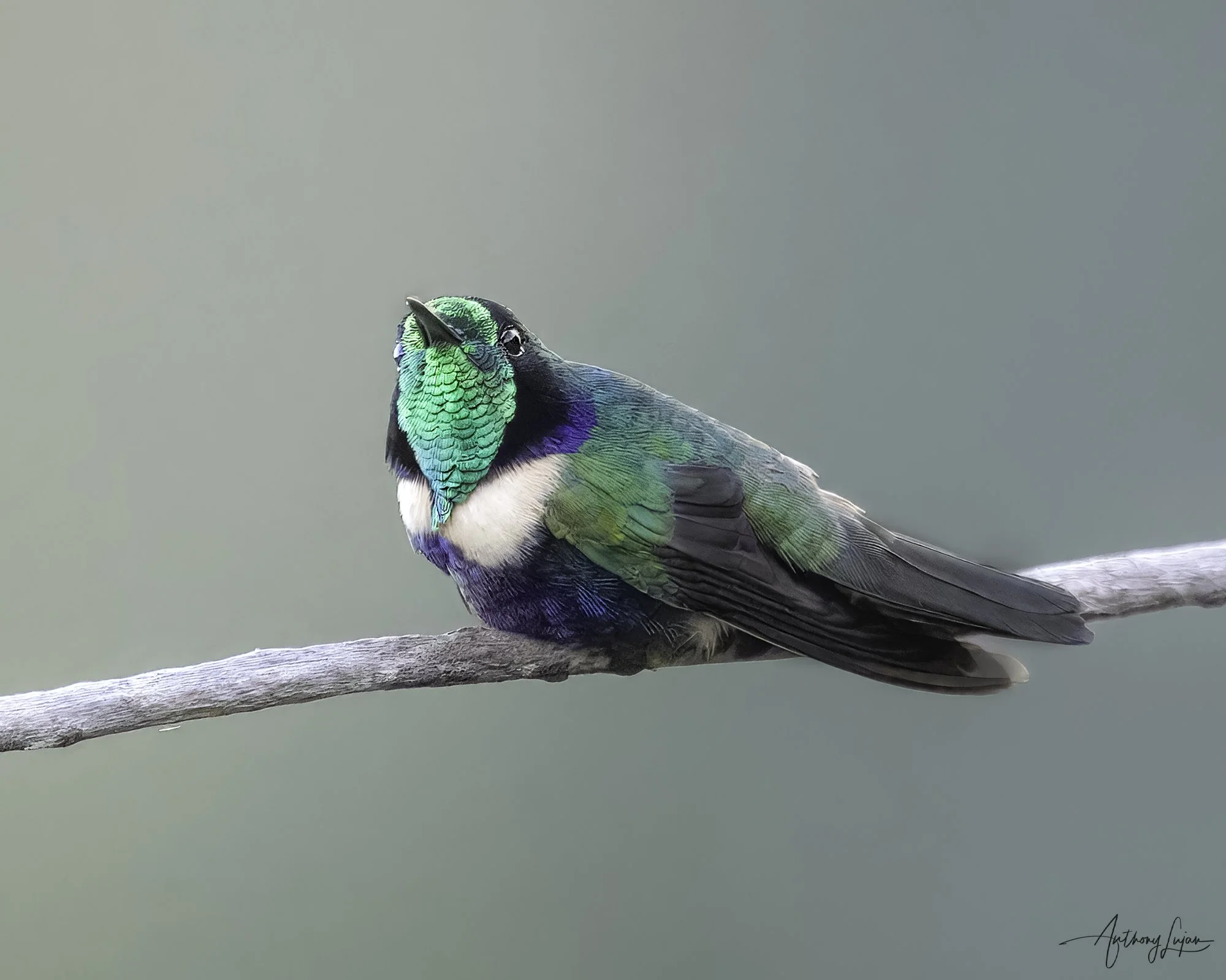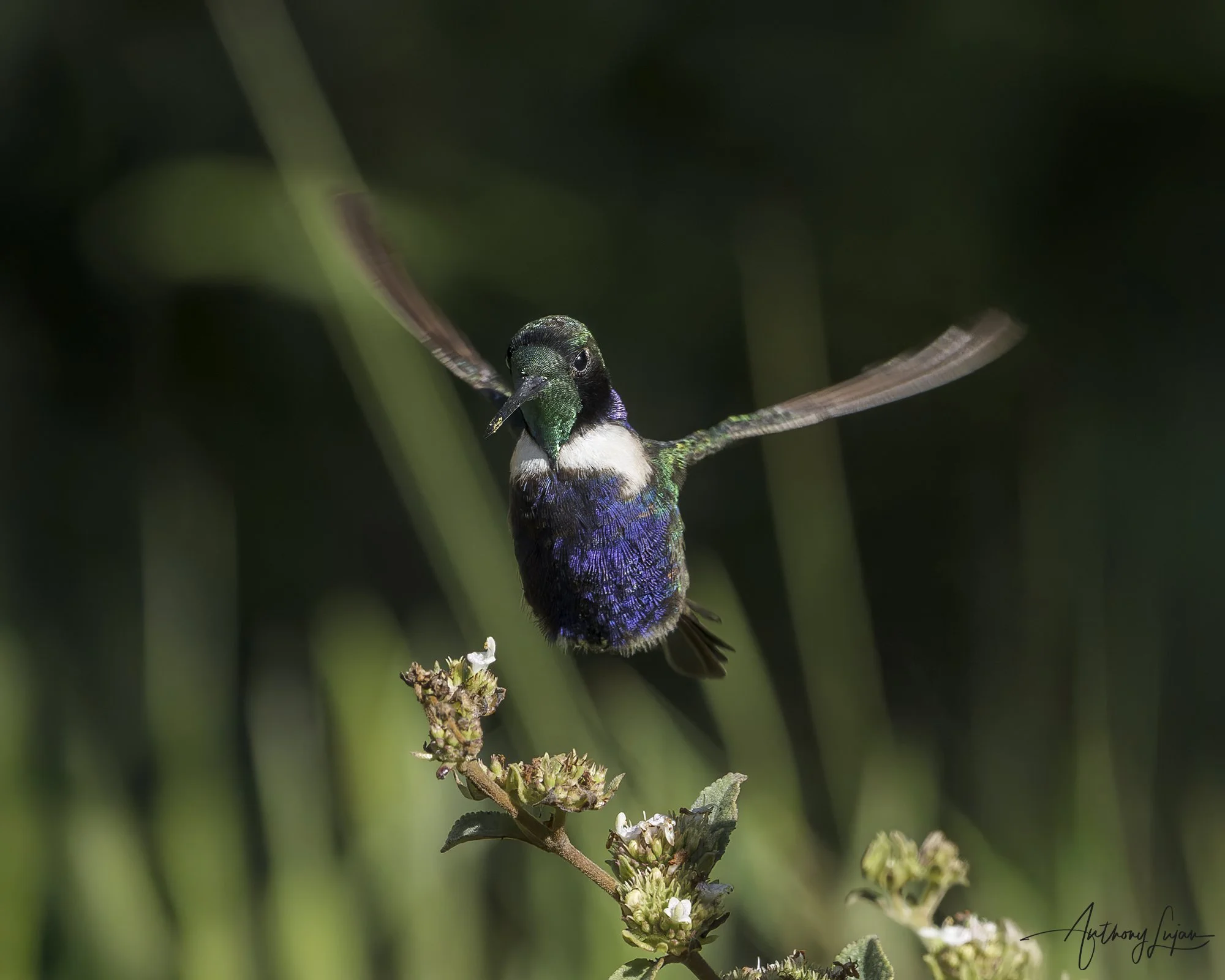Hyacinth Visorbearer
Hyacinth Visorbearer (Augastes scutatus)
Name Origin:
The genus Augastes comes from Greek, meaning “radiant” or “shining,” likely referencing the bird’s shimmering plumage. The species name scutatus means “shielded,” referring to the bold pattern on the male’s chest.
Quick Facts
🪶 Length: 8.1–10 cm (3.2–3.9 in)
⚖️ Weight: 2.7–6.0 g
🌎 Range: Southeastern Brazil (Serra do Espinhaço in Minas Gerais)
🧭 Elevation: 900–2,000 m (2,950–6,600 ft)
🌸 Diet: Nectar and small insects
🏡 Habitat: Montane campos rupestres and rocky scrubland
🧬 Clade: Polytminae “Mangoes”
📊 Status: Least Concern (IUCN 2024)
Subspecies & Distribution
Three subspecies:
Augastes scutatus scutatus
Distribution: Central and eastern Serra do Espinhaço, Minas Gerais, inhabiting rocky slopes and campos rupestres between 1,100 and 2,000 meters.Augastes scutatus ilseae
Distribution: Northern and central portions of the Espinhaço range in Minas Gerais, found in similar rocky highland scrub from 1,000 to 1,800 meters.Augastes scutatus soaresi
Distribution: Isolated populations in the southern Serra do Espinhaço, especially the upper Piracicaba basin, typically between 900 and 1,600 meters in dry montane grassland.
Species Overview
The Hyacinth Visorbearer is a high-elevation specialist found in the rocky grasslands of southeastern Brazil. Males are unmistakable with their metallic green crown and throat, vivid white breast band, and deep violet-blue belly. It prefers open, sunlit slopes with flowering shrubs, bromeliads, and exposed rocks.
Male Description:
Golden-green forehead and throat, blue belly, white chest band, bronzy green upperparts. Compact tail and black, straight bill. Often perches low or hovers just above flowering shrubs.
Female Description:
Green above, pale gray below with faint green wash. Lacks the vivid crown and gorget of the male. Tail feathers show pale tips.
Habitat & Behavior:
Restricted to montane campos rupestres, it forages on low flowering plants and shrubs, often flying close to the ground. It uses a trap-lining strategy and occasionally defends flower patches. Nests are built low in shrubs using plant fibers and spider silk.
Conservation Note:
Though currently assessed as Least Concern, the species has a narrow distribution tied to fragile highland ecosystems. Threats include habitat degradation from mining, fires, and climate shifts. Protection of the Serra do Espinhaço corridor is crucial for long-term stability.




Checkout Anthony’s playlist of this species! Click the top right dropdown to see all the videos.

